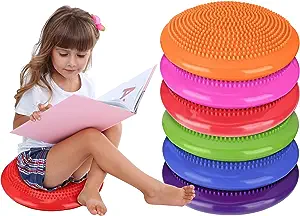
5 brilliant ways to add sensory adaptation into the Classroom
This post was created by Marra Robert, OTD, OTRL in August 2023 and contains affiliate links.
Are you curious how sensory adaptation may support your child in the classroom? Do you want to learn more about sensory processing and ways to adapt the environment to support learning?
Well, look no further. We will not only discuss sensory processing, but we’ll also look at how sensory adaptation strategies can be a game changer for kids in the classroom.
This post contains affiliate links.
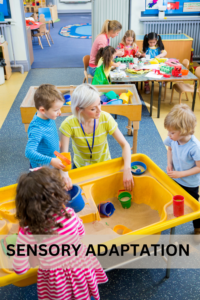
If you are a parent of a child with sensory needs or a teacher with a classroom full of children with different sensory needs, then this insightful guide on sensory adaptation is for you.
Here, you will learn sensory adaptation strategies to implement into the classroom to support children with different sensory processing skills to support the learning of every child.
Hi! My name is Marra, and I am a mama and a pediatric occupational therapist. I’ve spent years working with children with different developmental challenges and supporting their parents through the ups and downs of child development.
The majority of children I’ve worked with have sensory processing disorders or some sort of sensory challenges.
I love educating parents and teachers about sensory processing and collaborating with them on sensory strategies to support learning both at home and in the classroom.
This post is all about using sensory adaptation strategies in the classroom to support the learning and growth of children with sensory processing challenges.
What is sensory processing?
Before we dive into what sensory adaptation refers to, we first need to understand sensory processing. If you have read my other posts, you should be familiar with this and can skip this section, but I like to give a general overview for those of you who are new to the site.
Sensory processing is our ability to take in sensory information from our environment, make sense of it, filter out what is important to pay attention to and what is not important to pay attention to, and then choose an appropriate response.
Sensory processing is a BIG JOB! We have 8 sensory systems that are constantly receiving sensory information all of the time.
We have the 5 sensory systems that we are all more familiar with: sight, sound, smell, taste, and touch. And then, we have 3 additional sensory systems that are less well known: vestibular, proprioception, and interoception.
The vestibular sensory system is our sense of movement and our response to gravity. It helps us stay balanced as we move around our environment. Proprioception is our sense of deep pressure and body awareness. Interoception is our sense of how our body is feeling.
If you would like to learn more about sensory processing and our 8 sensory systems, check out the post below.
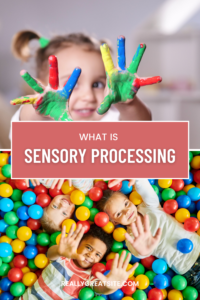
WHAT IS SENSORY ADAPTATION
Ok, now that we have a deeper understanding of what sensory processing is, let’s take a closer look at what sensory adaptation refers to.
Sensory adaptation can be defined as different things based on the context. For this post, we will define sensory adaptation related to children with sensory processing challenges in the classroom.
As mentioned above, sensory processing is a BIG JOB! Our brain is constantly receiving a ton of information from 8 sensory systems all of the time. Everyone is always in a constant state of processing sensory information.
This is an even bigger job for children who are still growing and developing. For some children, this can be especially hard. These children might have a diagnosis such as autism or sensory processing disorder, or they may be typically developing with sensory processing challenges.
Because we need to process sensory information before choosing a response or taking action, these children often struggle with tasks such as sitting still, communication, impulsivity, attention, and behavior. We need to be able to process information in our environment efficiently first before we do anything else.
This is where sensory adaptation comes into play. Sensory adaptation refers to adapting or changing aspects of the child’s environment to improve their sensory processing and make it easier to focus on the task they are participating in.
Simple sensory adaptations can help a child feel more comfortable in their environment and spend less energy trying to process their sensory input and more energy on whatever activity they are participating in.
You can add sensory adaptations to any environment your child is in, but for the sake of this post, we’ll be focusing on the classroom.
Below are some sensory adaptation tools and strategies, as well as sensory adaptation equipment, that can make a world of difference for students with sensory processing challenges in the classroom.
11 BRILLIANT WAYS TO ADD SENSORY ADAPTATION INTO THE CLASSROOM
1. Chair Balls with Feet
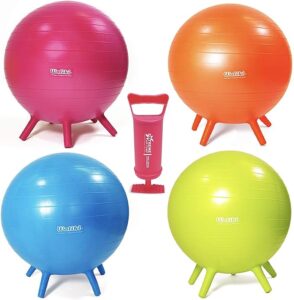
These ball chairs are such an amazing sensory adaptation equipment for the classroom. By encouraging students to sit on these ball chairs, they can get some of the movement their bodies may be seeking while they are able to attend to learning activities at their desks.
The feet on these ball chairs make them more stable for children with decreased core strength and prevent the balls from rolling all over the classroom.
These ball chairs not only act as great sensory adaptation equipment for students with sensory needs but are beneficial for all students in the classroom regardless of their sensory processing skills.
2. wiggle cushion

Wiggle cushions are a great alternative to the ball chairs and are more of a portable option. While they do not provide as much movement as the ball chairs they still do give the child some movement while they are sitting on it.
What is great about the wiggle cushion is that you can keep it on the chair at the student’s desk, and they can easily move it to the ground for a circle time activity if they are younger or to another classroom if they are older and move around more throughout the day.
3. Fidgets
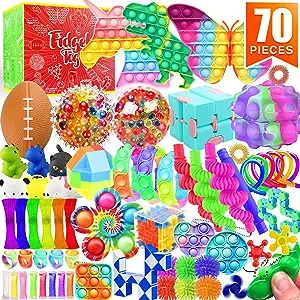
Fidgets are a must-have sensory adaptation tool for the classroom and are beneficial to all children in the classroom. Another great strategy for children with and without sensory processing challenges.
These fidgets can help keep their little hands busy while their minds are working hard to pay attention and learn. These fidgets are great for children of all ages. I myself love fidgets and use them from time to times.
What’s really important to do when introducing fidgets in the classroom is to discuss with your students the differences between a fidget and a toy. A toy is to play with and a fidget is to help increase attention.
Always keep the end goals and purpose of the fidget in mind, and if it becomes distracting, then it is time to try a different fidget or take a break. There are plenty to choose from in this package.
4. Chair Bands
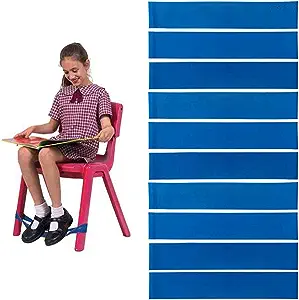
Chair bands can be an incredibly beneficial sensory adaptation strategy for the classroom. You tie these bands on the front legs of your student’s chair, and they get to push their feet and legs against them for sensory input.
These chair bands provide the student with proprioceptive or deep pressure sensory input, which helps to calm their bodies and improves attention to the task they are participating in.
Chair bands are kind of nice because they are completely out of sight and hidden under the student’s desk. This way, the student doesn’t feel singled out and can really focus on the learning activity in front of them.
5. Yoga and Mindfulness cards
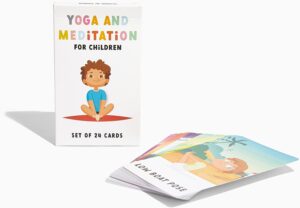
I absolutely love teaching and practicing yoga and mindfulness with the children I work with. As soon as I heard about the incredible benefits yoga and mindfulness practice can have on child development, I immediately began incorporating into my treatment sessions.
It would be amazing to incorporate yoga into a classroom and is the perfect activity to do during a movement break between lessons. The whole class can participate in yoga and mindfulness activities together.
If you would like to learn more about all of the powerful benefits yoga and mindfulness practice can have on child development, check out the post below.
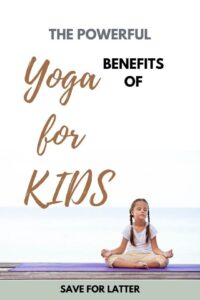
There you have it! The top 5 sensory adaptations for the classroom recommended by a pediatric OT!
One thing to note is that sensory processing and sensory adaptation is not a one-size–fits-all solution. It involves a lot of trial and error, even from seasoned OTs. This is because every child is unique, and their sensory needs change day to day or even moment to moment, just like ours do.
It’s important to keep the end goal in mind. Whatever sensory adaptation equipment, tool, or strategy you are implementing in the classroom to improve their participation in learning activities and engagement in class. If it’s not, then try something else.
This post was all about how implementing sensory adaptation into the classroom can help students with or without sensory challenges improve their attention, learning, and do big things!
